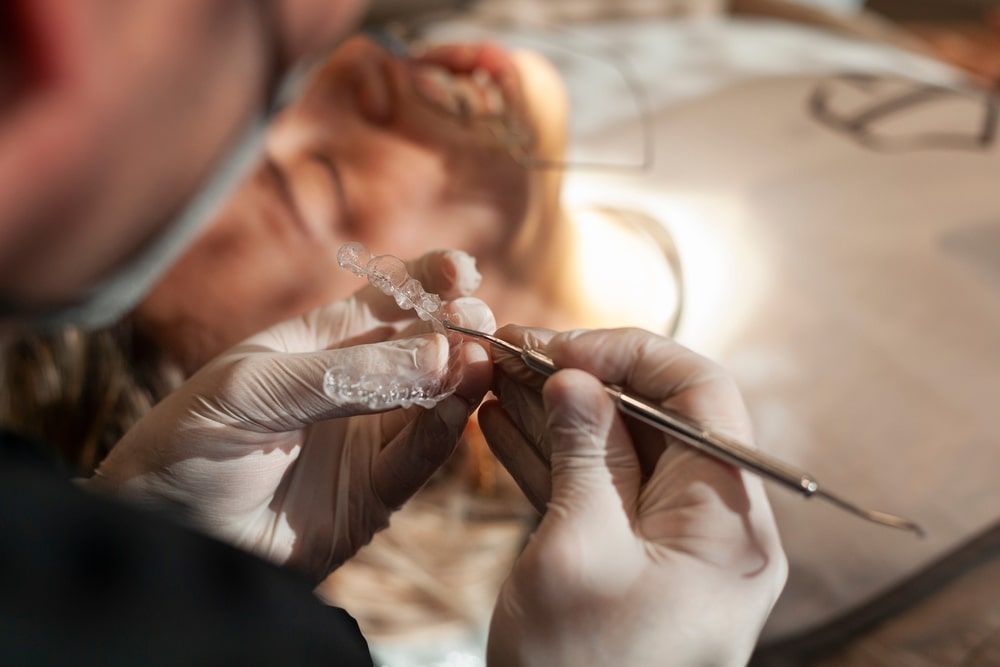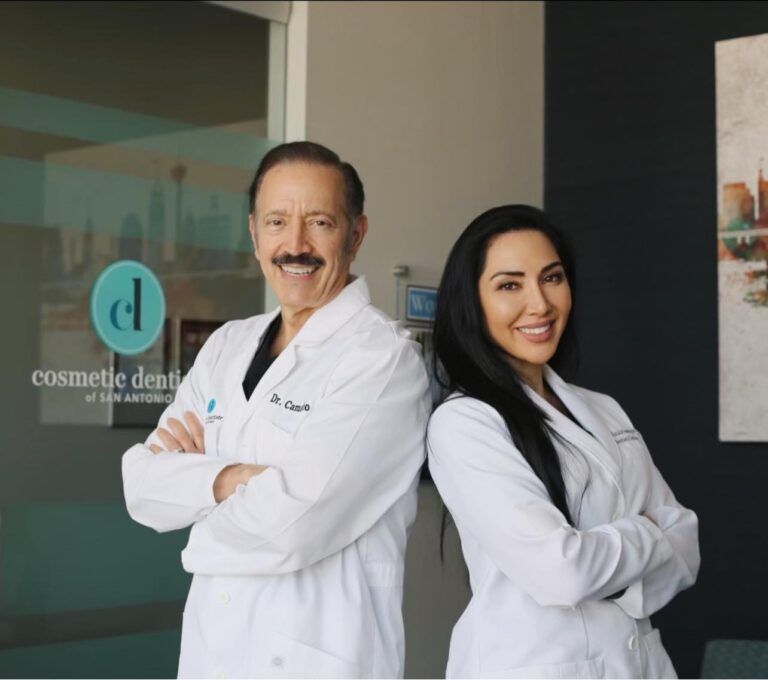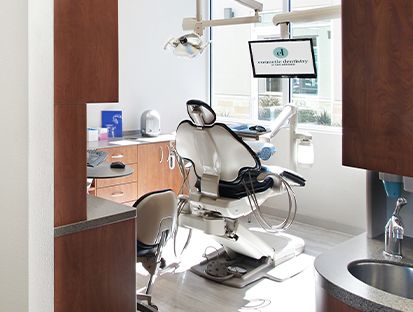Enhancing your smile has never been easier or more comfortable, thanks to the advancements in cosmetic dentistry. Minimally invasive cosmetic dental techniques offer a range of options to improve the appearance of your teeth with minimal discomfort and downtime. Whether you’re looking to whiten your teeth, correct minor imperfections, or align your smile without traditional braces, these innovative procedures prioritize preserving your natural tooth structure while delivering stunning results. In this blog, we’ll explore some of the most popular minimally invasive cosmetic dental techniques available today, helping you achieve the smile of your dreams with less pain and quicker recovery times.
In This Blog:
- What is Minimally Invasive Cosmetic Dentistry?
- Popular Minimally Invasive Cosmetic Dental Techniques
- Benefits of Minimally Invasive Techniques
- Factors to Consider
What is Minimally Invasive Cosmetic Dentistry?
Minimally invasive cosmetic dentistry focuses on enhancing the appearance of your smile while prioritizing the preservation of your natural tooth structure and overall oral health. Unlike traditional cosmetic dental procedures, which may require significant alteration or removal of tooth enamel, minimally invasive techniques aim to achieve the desired aesthetic results with the least amount of intervention possible. The key principles of minimally invasive dentistry include:
- Conservation of Tooth Structure: Procedures are designed to preserve as much of the natural tooth as possible, reducing the need for extensive drilling or reshaping.
- Advanced Materials and Technology: Utilization of state-of-the-art materials and technologies that require less invasive techniques while still providing durable and aesthetically pleasing results.
- Patient Comfort: Emphasis on reducing pain and discomfort during and after the procedure, leading to a more positive dental experience.
- Natural-Looking Results: Achieving a beautiful, natural-looking smile that enhances the patient’s overall appearance without appearing artificial or overdone.
Comparison with Traditional Cosmetic Dental Techniques:
Traditional cosmetic dental techniques, such as crowns or full veneers, often involve significant reshaping of the tooth to accommodate the restoration. While effective, these procedures can lead to increased sensitivity and a higher risk of future dental problems due to the removal of substantial amounts of tooth enamel.
In contrast, minimally invasive techniques aim to achieve similar aesthetic results with far less intervention. For instance, instead of full veneers, ultra-thin veneers or bonding might be used to address cosmetic concerns with minimal alteration to the natural tooth. This approach not only enhances the appearance of the teeth but also supports their long-term health and functionality.
By opting for minimally invasive cosmetic dentistry, patients can enjoy a more comfortable experience, faster recovery, and a beautiful, natural-looking smile that lasts.
Popular Minimally Invasive Cosmetic Dental Techniques
Minimally invasive cosmetic dental techniques offer a variety of solutions to improve the appearance of your teeth with minimal disruption to your natural tooth structure. Here are some of the most popular options available:
Teeth Whitening
Teeth whitening is one of the simplest and most effective ways to enhance your smile. It can be performed in-office or at home:
- In-Office Whitening: This method uses professional-grade whitening agents and advanced light-activated systems to deliver dramatic results in a single visit. It’s ideal for those looking for immediate improvements.
- At-Home Whitening: Dentists can provide custom-fitted trays and professional-grade whitening gel for patients to use at home. This option is convenient and allows gradual whitening over several days or weeks.
- Benefits: Both methods effectively remove stains and discoloration, resulting in a brighter, more youthful smile.
Dental Bonding
Dental bonding involves applying a tooth-colored resin to the surface of the teeth to correct imperfections such as chips, cracks, gaps, and discoloration. The resin is sculpted to the desired shape and then hardened with a special light.
- Benefits: Bonding is a quick, painless procedure that can be completed in one visit. It’s a cost-effective option that provides immediate results.
Veneers
Veneers are thin shells of porcelain or composite resin that are bonded to the front surface of the teeth to enhance their appearance. Minimally invasive options include:
- Porcelain Veneers: These are durable and stain-resistant, offering a long-lasting solution.
- Composite Veneers: These are less invasive and can be applied directly to the teeth in a single visit.
- Advantages of Ultra-Thin Veneers: Ultra-thin veneers require little to no removal of tooth enamel, preserving the natural structure of the teeth while providing a stunning cosmetic improvement.
Invisalign and Clear Aligners
Clear aligners, such as Invisalign, are a popular alternative to traditional metal braces for straightening teeth. They are custom-made, transparent trays that gradually move teeth into their desired positions.
- Benefits: Clear aligners are virtually invisible, removable, and more comfortable than traditional braces. They allow for easier oral hygiene and do not restrict diet choices.
Contouring and Reshaping
Tooth contouring, also known as enameloplasty, involves the removal of small amounts of enamel to reshape the teeth. This technique is used to correct minor imperfections such as uneven edges, slight overlaps, or irregular shapes.
- Benefits: Contouring is a quick and painless procedure that can significantly enhance the appearance of the teeth with minimal intervention. It’s often completed in a single visit and doesn’t require anesthesia.
Each of these minimally invasive techniques offers unique benefits, making it easier than ever to achieve a beautiful smile while maintaining the health and integrity of your natural teeth. By consulting with a cosmetic dentist, you can determine the best options for your specific needs and aesthetic goals.
Benefits of Minimally Invasive Techniques
Minimally invasive cosmetic dental techniques provide a host of benefits that make them appealing to patients seeking aesthetic improvements with minimal disruption. Here are some of the key advantages:
Preservation of Natural Tooth Structure
One of the primary benefits of minimally invasive techniques is the preservation of natural tooth structure. By removing less enamel and dentin, these procedures maintain the integrity and strength of the teeth, which can enhance long-term oral health and reduce the likelihood of future dental problems.
Enhanced Comfort and Reduced Pain
Minimally invasive procedures are designed to minimize discomfort. They often require little to no anesthesia and involve less drilling and reshaping compared to traditional methods. This leads to a more comfortable experience during the procedure and less postoperative pain.
Quicker Recovery Times and Immediate Results
Patients undergoing minimally invasive cosmetic dental treatments typically experience shorter recovery times. Many procedures can be completed in a single visit, allowing patients to enjoy the benefits immediately. This is particularly advantageous for those with busy schedules or special events coming up.
Lower Risk of Complications
Because minimally invasive techniques are less aggressive, they carry a lower risk of complications such as infection, sensitivity, and damage to surrounding tissues. This contributes to a safer and more predictable outcome.
Long-Term Dental Health Benefits
By preserving more of the natural tooth structure and reducing the need for extensive restorations, minimally invasive techniques support better long-term dental health. This can result in fewer dental issues down the line and maintain the overall functionality of the teeth.
Natural-Looking Results
Minimally invasive cosmetic dental procedures are designed to enhance the appearance of your teeth while maintaining a natural look. The materials and techniques used blend seamlessly with the existing tooth structure, providing results that are both aesthetically pleasing and subtle.
Factors to Consider When Choosing a Minimally Invasive Cosmetic Procedure
Selecting the right minimally invasive cosmetic dental procedure involves several important considerations to ensure optimal results and satisfaction. Here are some factors to keep in mind:
Individual Dental Health and Specific Cosmetic Goals
Before undergoing any cosmetic procedure, it’s essential to have a thorough dental examination to assess your overall oral health. This helps determine which minimally invasive techniques are suitable for your specific needs. Clearly defining your cosmetic goals will also guide the selection of the most appropriate procedures.
Consultation with a Cosmetic Dentist
A consultation with a qualified cosmetic dentist is crucial. They can evaluate your dental health, discuss your aesthetic objectives, and recommend the best minimally invasive options. The dentist can also explain the expected outcomes, potential risks, and the steps involved in each procedure.
Potential Costs and Insurance Coverage
Cost is an important consideration when choosing a cosmetic dental procedure. Minimally invasive techniques can vary in price depending on the complexity and materials used. It’s advisable to discuss the costs upfront and check if any part of the procedure is covered by dental insurance. Some dental offices offer financing options to make treatments more affordable.
Longevity and Maintenance of Results
Understanding the longevity of the results and the maintenance required is vital. While minimally invasive procedures often provide excellent results, they may require periodic maintenance or touch-ups to sustain their appearance. For example, teeth whitening might need to be repeated every few months to a year, while veneers can last several years with proper care.
Personal Preferences and Lifestyle
Your personal preferences and lifestyle should also be considered. For instance, if you prefer a treatment with minimal upkeep, options like dental bonding or ultra-thin veneers might be more suitable than procedures requiring regular adjustments. Additionally, if you lead an active lifestyle or engage in sports, clear aligners like Invisalign might be a better fit than traditional braces.
Dentist’s Experience and Expertise
The experience and expertise of the cosmetic dentist performing the procedure play a significant role in the success and safety of the treatment. Ensure that the dentist has a proven track record with the specific minimally invasive techniques you are considering. Reading patient reviews and viewing before-and-after photos can provide insight into their skill and results.
By carefully considering these factors, you can make an informed decision about which minimally invasive cosmetic dental procedures will best help you achieve the smile you desire, while also aligning with your dental health needs and personal preferences.
Conclusion
Minimally invasive cosmetic dental techniques offer a revolutionary approach to enhancing your smile with minimal discomfort and maximal preservation of your natural teeth. From teeth whitening and dental bonding to ultra-thin veneers and clear aligners, these procedures provide effective and aesthetically pleasing results without the extensive intervention of traditional methods. By prioritizing patient comfort, reducing recovery times, and lowering the risk of complications, minimally invasive cosmetic dentistry makes it easier than ever to achieve the smile you’ve always wanted. If you’re considering improving your smile, consult with a cosmetic dentist to explore these innovative options and find the best treatment plan tailored to your needs. Embrace the future of cosmetic dentistry and discover the confidence that comes with a beautiful, natural-looking smile.
Dr. Edward Camacho earned his DDS from the University of Texas Health Science Center. He believes in continuing his education and training and that a dentist’s education should never cease. As a result, he has received extensive training in aesthetic dentistry, restorative dentistry, dental implant placement, orthodontics, computerized dentistry, and laser dentistry. Dr. Camacho’s continued education and completed cosmetic procedures has helped him establish himself as one of San Antonio’s leading cosmetic dentists. He has completed thousands of cosmetic procedures over the span of his 40 year career.







